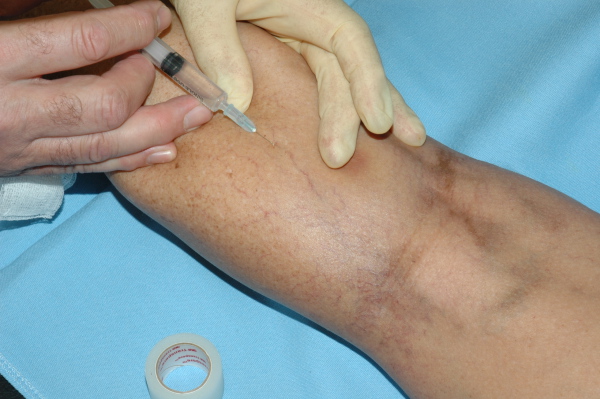Say Goodbye To Varicose Veins In 2015 With Powerful Treatment Known As Sclerotherapy


As the New Year gets under way, you’re excited to revitalize your skin, your body, and your health. One common issue that many woman (and some men) struggle to manage is varicose veins, which can be aesthetically annoying and potentially impairing or even debilitating.
So how should patients resolve these veins, safely and effectively?
One therapy with a long and successful clinical history is known as sclerotherapy. During this treatment, a doctor injects a solution into the varicose veins to artificially harden them, causing them to collapse and/or fade. In some cases, the veins can disappear immediately during the sclerotherapy. In other rare cases, it can take weeks for them to fade.
Doctors in Europe developed sclerotherapy back in the 19th Century; it does not involve surgery, and it’s relatively pain free. A physician uses a tiny needle to inject the sclerosing solution in conjunction with putting pressure to keep blood out of the vein, so that the hardening agents can do their work. The solution causes the blood vessels’ linings to swell, stick and clot thus shrinking them away from view.

The procedure has been used thousands and thousands of times successfully since the 1930s, but you still need to be watchful for potential side effects. For instance, itching and raised red bumps near the site of the injection are pretty common; these irritations typically resolve several days after treatment. Bruising can also result and persist for days or even weeks, depending on the nature of the surgery and how the patient tolerates it.
Larger veins can develop lumps and persist for a while (up to months) before dissolving. In addition, small new blood vessels can form near the sites of the injections. This “neovascularization,” as it’s called, usually fades and disappears over time after the treatment.
Some potentially dangerous side effects include inflammation near the groin, sudden leg swelling and development of ulcers near the site of the injections. Your doctor may also need to test for potential allergic complications related to the sclerotic solution.
Once you’ve successfully treated the problem, work with your dermatologist, doctor and nutritionist to design a well-rounded wellness program to address any underlying metabolic, exercise-related or medical issues that could put you at risk for developing varicose veins, spider veins or other blemishes or skin issues in the future.
Consider, for instance, cleaning up your diet, cutting back on cigarettes (if you smoke), reducing stress in your life and getting more sleep. Your doctor and nutritionist may also recommend appropriate supplements.
Sclerotherapy is not the only method for dissolving varicose veins or managing their aesthetic and medical complications. Fortunately, you don’t have to try to make decisions about how to treat yourself in a vacuum. The team here at Mountain View Dermatology would be happy to talk to you about your skin conditions and give you sensible, strategic advice about what to do next. Call us today for a free consultation with a qualified Colorado dermatologist.
This is a guest post by the boulder dermatology office of Mountain View Dermatology – A company offering a wide variety of skin care services including skin cancer treatment.
